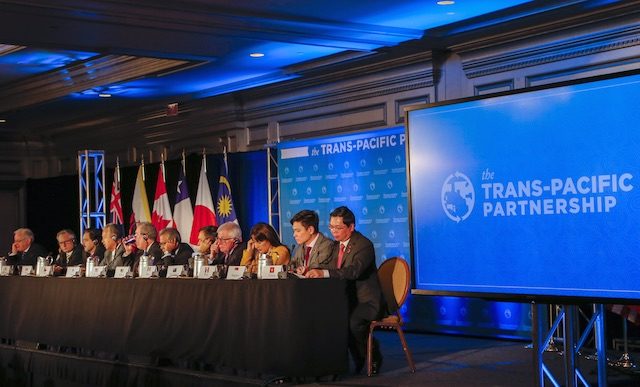SUMMARY
This is AI generated summarization, which may have errors. For context, always refer to the full article.

ATLANTA, USA – The 12-country Pacific Trade Partnership, agreed in Atlanta on Monday, October 5, is a broad agreement to lower trade barriers and increase investment protections in a region comprising 40% of the global economy.
Key points:
– It reduces over time thousands of small and large tariff and non-tariff barriers on trade between the group, from Japanese auto parts to the US market, Australian drugs to Peru, US rice to Japan and New Zealand cheese to Canada. It also allows garment exporters like Vietnam to use yarn and other materials from outside the TPP and still benefit from TPP country tariffs.
– Countries must open state procurement more to foreign competition and not give state-owned enterprises undue preference. In some cases, including for Malaysia’s Bumiputera policies favoring ethnic Malay firms, this will be phased in over time and only for companies and deals over certain sizes.
– The 12 countries agreed to resolve disputes with foreign investors before expert panels. While critics say this “investor-state dispute mechanism” will leave government vulnerable to frivolous lawsuits and extra-territorial laws, the TPP creates exceptions and barriers to frivolous lawsuits, according to negotiators.
– Establishes 5- to 8-year patent protections for cutting-edge biologic drugs, less than the 12-year US threshold but more than Australia’s 5 years. The range reflects failure to bridge some differences and the willingness to allow some countries room to harmonize domestic laws with the treaty.
– Sets standards for the cross-border issues of e-commerce and financial services, including preventing governments from forcing companies to place their data storage servers in the country or demanding access to a company’s software source code.
– Requires countries to live up to labor rights and fairness standards of the International Labor Organization, and not to weaken labor protections to attract investment.
– Signatories are obliged to make strong efforts in environmental protection and not to undermine protections to boost trade and investment.
– Rappler.com
Add a comment
How does this make you feel?
There are no comments yet. Add your comment to start the conversation.